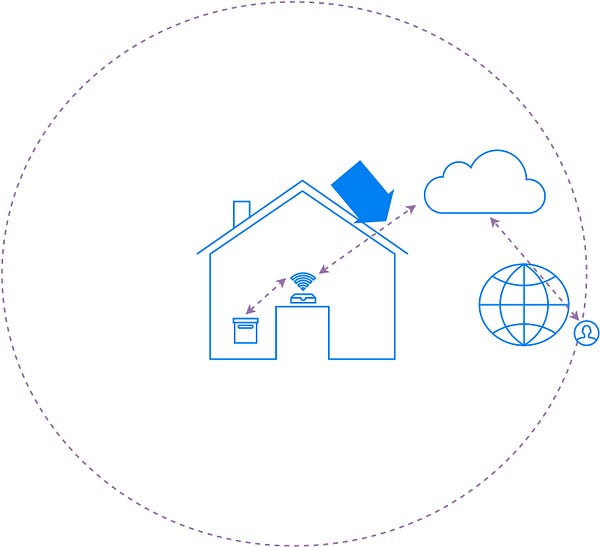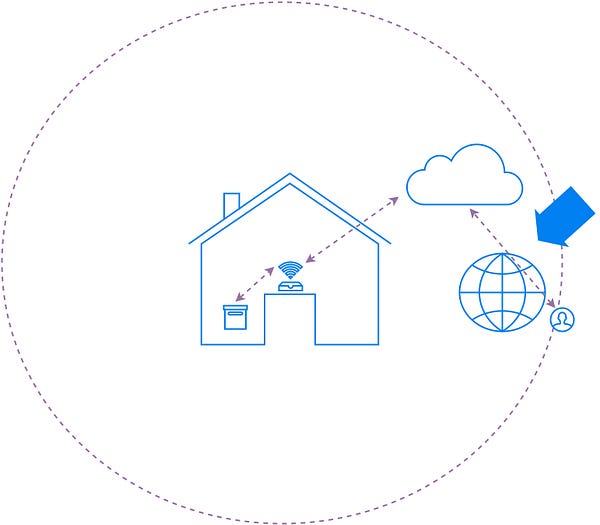(Originally published here, please excuse misalignments, if any)

Recently I was researching for articles on Security and IoT,
and I happened to notice that most of these focus more on
fear-mongering, explaining in detail how a certain device, if hacked,
could cause devastating problems. And then many articles advertise the
use of certain security solution on the cloud or likewise. But very few
attempt to explain the security context, at the IoT device level. So
here is an attempt to break-down the problem and understand the most
common security issues that could surface and the typical solutions for
the same. Hopefully this helps you to develop more secure IoT products
by design.
Why is IoT security a concern?
Connected
devices are here to stay and they are entering our lives in ways like
never before. These are no longer limited to the smart home electronic
appliances. Today we have smart door locks and smart vacuum cleaners and even the US president wearing a fitness tracker. Security is a concern primarily because of the following:
- Connecting more physical things potentially increases the surface area of the attack vector. While previously the attack could be limited to your email account, or social network account, the attack could now come to your house.
- Newer interactions with these connected devices opens up completely new attack vectors.
- Strong constraints on cost and power of connected devices required a newer breed of hardware to address a lot of the IoT use cases. While embedded devices have been around for a long time, connecting them to the Internet opens them up to a range of attacks that weren’t possible on these devices before. It took a while for the hardware to catch up with the latest security standards for already identified attack vectors.
- As with the rapid increase in cloud/web-service developers, it takes time for newer set of enthusiasts, hobbyists and developers to get acquainted with the attack vectors and their solutions.
Device Interactions
Let
us first try to look at the typical interactions that any such smart
device will have with the outside world. Once all the interactions are
known, we can identify potential attack vectors associated with each of
these interactions and then come up with meaningful solutions to address
these.

There are a wide variety of smart devices that are being built out there. Let’s look at Wi-Fi enabled devices that are typically deployed in smart homes. Consider this smart device (one the left) part of a smart home.
Most interactions with this device can be categorized into three types:

|

|

|
- Physical Access: The first is the physical interactions that the device owner has with her devices. For this interaction you have to be present in the house for operating the device.
- Local Network Access: The second is the access over the local Wi-Fi network. For this interaction you can be anywhere in the vicinity of the house in the Wi-Fi Access Points range.
- Remote Access: Finally, most Wi-Fi devices talk to some cloud services. It may be to facilitate remote access to the owner of the device, or to query other services (weather, electrical pricing etc.).
Most
attackers would prefer to exploit the remote access model. This allows
them to exploit millions of devices across the world without leaving
your chair. So let’s look at that interaction first.
Remote Access
As
a common pattern of remote access, most connected devices are currently
assuming a network client persona, and communicating with a remote
server over HTTP, MQTT or other such protocol. By not being a server
themselves, for the remote access scenario, these devices avoid having
to re-configure firewalls on home gateways to open up holes for the
incoming accesses.
From the device to the cloud
Let’s
look at the first part of the device interaction from the AP onward to
the cloud (see figure below). There are multiple attacks possible
targeting this communication, like,
- man-in-the-middle: snoop your thermostat data from your device to the cloud (Nest), or modify settings from the cloud to the device
- replay attacks: if the data is encrypted, replay the same encrypted packet of data that unlocks the door lock of the house
- DNS spoofing: divert the traffic of your connected toy to a malicious server
- device spoofing: create a malicious/fake camera, and make the cloud believe that the camera belongs to you, the owner, and that the video feed is genuine

But
if you notice, most of these attacks are also applicable to an online
banking transaction. The communication pattern is no different.
Obviously, the right thing to do is to rely on the tried and tested
standards that are used to protect our online banking transactions. This
mechanism is Transport Layer Security (TLS). TLS works at the transport layer, so you can run any higher level protocol, HTTP, MQTT or others, on top of it.
Until
recently, running a TLS stack on micro-controllers wasn’t a
possibility, because of their low compute power and constrained memory.
The latest IoT micro-controller platforms, however, are powerful enough to run the TLS stack. Many low footprint TLS
software implementations are also available that can run on these
hardware platforms. The hardware and software capability being now
available, there is no reason not to use TLS for this communication over
any other home-grown security mechanism.
From the cloud to the app
Now
let’s look at the communication from the cloud to the user’s app. This
isn’t directly related IoT per-se, but mostly about following standard
practices for secure web API design. These are the APIs that allow your
smartphones or other devices, to interact with the cloud for querying or
controlling the connected devices in your home.

The entire web API should be exposed over TLS. Additionally, you have to ensure that the user apps are appropriately authenticated with the cloud service, and then they have the proper authorization to access the thing that they are supposed to talk to. Thankfully, there are many IoT cloud platforms available that provide a higher-level abstraction that already takes care of most of these things.
Through the secure communication channel
The
most common manner in which we get malware installed on our computers
is by accessing sites/files that we aren’t supposed to access.
Connected
devices must communicate with a limited set of known servers. And these
servers should be under the control of trusted parties.
The
other protection that helps is to have a read-only partition that runs
the firmware image. Even if you have to make any changes, it should be
first switch to a read-write mode, and then written to.
While
the above is a short list of the most common attack vectors, there
could be use case specific attack vectors based on interactions with
other elements. These should be also considered and tackled. For
example, say a door lock is unlocked if the phone reaches a certain
location, can the phone be tricked using GPS spoofing?
Those
are some of the common attack vectors and their solutions for the
remote access scenario. In the next part, we will look at possible
attack vectors for local network access and physical access.
Note: Thanks to Pixabay for the shield image in the title